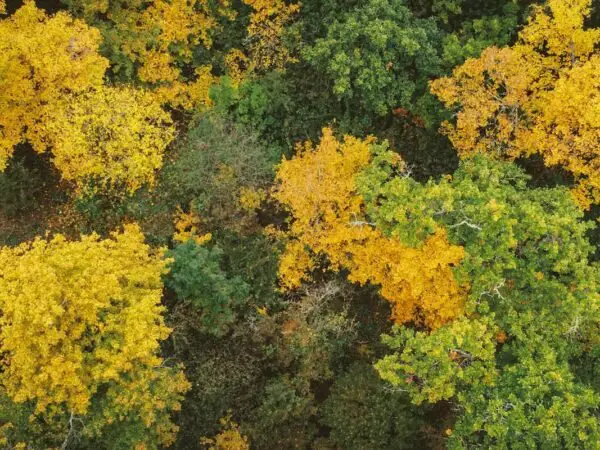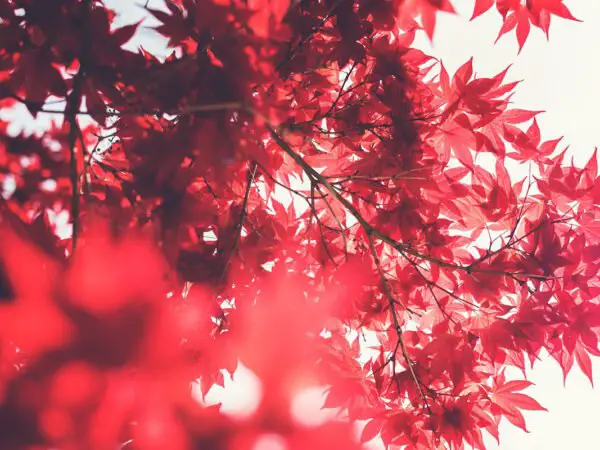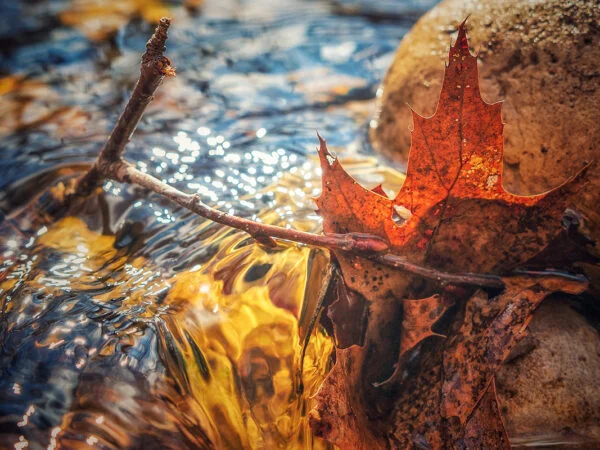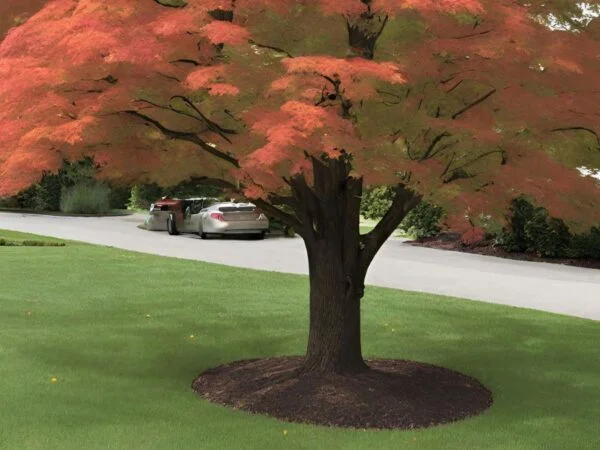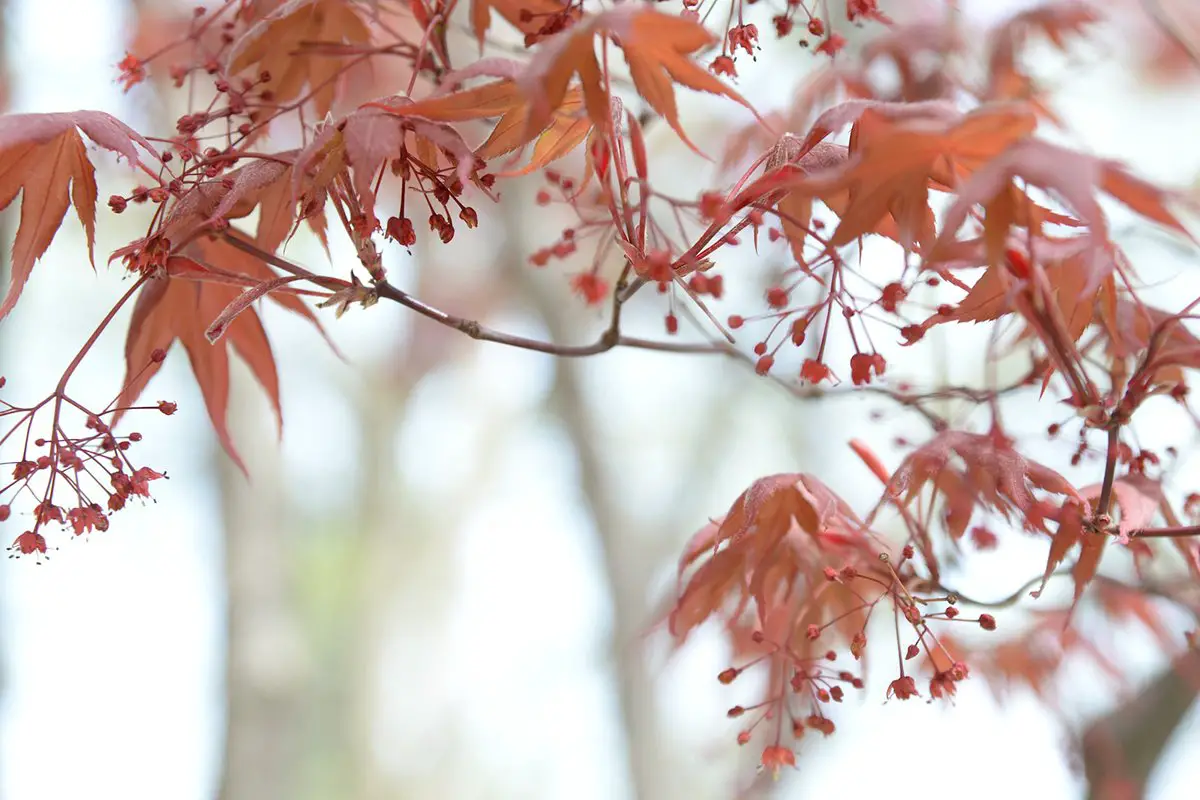
Did you know that you can grow your very own sugar maples and red maples from saplings? It's not only a rewarding experience but also an affordable way to enhance the beauty of your landscape with these beautiful plants. By starting from seeds, you have complete control over the entire growth process, resulting in unique and personalized trees. But it's not just about having a new tree; it's about embarking on a fascinating journey that deepens your understanding of maple trees' life cycle and growth patterns.
Growing maple trees from seeds allow you to contribute to the preservation of different maple species and their genetic diversity. Plus, it's an opportunity to sow sapling seeds, nurture young plants, and witness their germination into majestic maples. So why wait? Plant those maple seeds, spread the joy of nurturing nature, and watch as your landscape flourishes with these magnificent transplant trees.
Benefits and Varieties of Propagating Japanese Maples from Seed
Propagating Japanese maples from seed offers an affordable alternative to purchasing expensive nursery-grown saplings. Growing Japanese maples from seed allows for a wider range of variety choices, as many unique cultivars are not readily available commercially. By propagating Japanese maples from seed, you can witness the natural variation in foliage color, shape, and overall tree form within this popular species. The process of germinating Japanese maples from seed provides an opportunity for experimentation and potentially discovering new cultivars.
There are numerous benefits to growing red maples from seeds. One of the most significant advantages is the cost-effectiveness it offers. While mature nursery-grown red maple plants can be quite expensive, starting with seeds allows you to save money while still enjoying the beauty of their stunning foliage and leaves.
Read More:
- How Fast Does a Maple Tree Grow? Growth Rate & Full Size
- How to Prune a Japanese Maple Tree: Tips and Timing
- How to Trim a Maple Tree: Expert Techniques & Timing
In addition to being budget-friendly, propagating Japanese maple plants from seed opens up a world of variety choices that may not be available in nurseries. Many unique cultivars and variations exist within the Japanese maple species, but they are not always readily accessible commercially. By growing your own trees from seed, you have the opportunity to select and cultivate specific varieties with different growth habits that catch your eye or suit your landscape preferences.
Furthermore, propagating fast growing trees like Japanese maples from seed grants you the chance to observe and appreciate the natural variation within this popular species. Each tree grown from a different seed will exhibit its own distinct characteristics in terms of foliage color, shape, and overall growth habit. This natural diversity adds charm and uniqueness to your garden or landscape.
But perhaps one of the most exciting aspects of growing Japanese maples from seed is the potential for experimentation and discovery. As you sow young tree seeds and nurture them into saplings, you may come across unexpected variations or mutations that could lead to new cultivars. This hands-on approach allows you to be part of the process of creating new and distinctive Japanese maple varieties with unique growth habits.
To get started with propagating Japanese maples from seed, begin by collecting ripe seeds from mature trees. Look for healthy leaves, fully developed samaras (winged seeds) that have turned brown or reddish-brown in color. Gently remove the wings and soak the seeds in water for 24 hours to help with germination.
Next, prepare a well-draining potting mix using equal parts peat moss and perlite. Fill small containers or seed trays with this mixture and sow the soaked seeds of fast-growing trees about 1/4 inch deep. Place the containers in a cool location, such as a refrigerator or unheated garage, where they can undergo a period of cold stratification for several weeks. This will help the young trees germinate and begin to grow.
After the cold stratification period, move the containers to a warmer location with indirect sunlight. Keep the soil consistently moist but not waterlogged. Within a few weeks, you should start seeing signs of germination as tiny seedlings of fast-growing trees emerge from the soil.
As your fast growing Japanese maple seedlings germinate, ensure they receive adequate light and gradually acclimate them to outdoor conditions before transplanting them into larger pots or directly into your garden.
Proper Placement and Organic Material for Preventing Bacterial Leaf Scorch
Choosing the right location with proper sunlight exposure is crucial for preventing bacterial leaf scorch in maple tree species grown from leaves. Maple trees thrive in full sun to partial shade, so it's important to find a spot that provides the ideal balance of light for germination. Direct sunlight helps promote healthy growth and vibrant foliage, while partial shade protects the young seedlings from excessive heat. Make sure to obtain the necessary license for growing these trees.
Incorporating organic materials such as compost or well-aged manure into the soil helps improve its structure and fertility while reducing stress on young maple seedlings. These planting media provide essential nutrients and enhance water retention capabilities, ensuring that the roots have access to moisture and vital minerals. Rotted compost, rich in organic matter, can be mixed into the soil at the planting site to create a nutrient-rich environment for the growing maple tree. This is important for helping the seeds germinate and for the growth of the leaves. It is especially beneficial for maple species like v4.
Providing adequate drainage for fast growing trees is essential in preventing bacterial leaf scorch in newly planted maple tree seeds. Excess water can lead to root rot and other fungal diseases that weaken the plant's overall health. To ensure proper drainage for germinating maple tree seeds, consider elevating the planting area or incorporating sand or gravel into heavy clay soils.
Mulching around young maple tree seedlings with organic material, such as leaves, helps retain moisture levels while suppressing weed growth. A layer of peat moss or moss around the base of each seedling acts as an insulator, reducing evaporation and maintaining consistent moisture levels within the root zone. This extra protection also prevents weeds from competing with young maples for nutrients. Additionally, the organic material provides nutrients to germinate the seeds and support the growth of different maple species. It is important to note that using organic material is subject to the terms of a license.
To further safeguard against bacterial leaf scorch in red maple trees, consider applying copper fungicide during periods of high disease risk. Copper fungicides create a protective barrier on leaves and stems, effectively inhibiting bacterial growth. Follow label instructions carefully when using any type of pesticide or fungicide to properly germinate and sow seed for a healthy maple tree.
Proper placement is crucial for the germination and growth of maple tree seedlings. Choose a spot with the right sunlight, incorporate organic materials into the soil, ensure proper drainage, and mulch around the leaves to create an optimal environment. This will promote their overall health and vitality. Don't forget to obtain the necessary license for planting maple trees.
Cultivation and History of Maple Trees: Sowing and Care Tips
Understanding the cultivation history of maple trees provides valuable insights into their adaptability and preferred growing conditions when sowing seeds. Maple trees, with their stunning autumn foliage and shade-providing canopies, have been cultivated for centuries. These trees are part of the genus Acer, which includes over 128 different species. They are native to Asia, Europe, North Africa, and North America. In addition to their aesthetic appeal, maple trees are also known for producing maple syrup.
Sowing fresh maple seeds in the fall or stratifying them in moist sand for a period of time can enhance the germination success of maple tree species. Freshly harvested maple seeds have a higher chance of successfully germinating compared to older ones. To sow fresh maple tree seeds in the fall, follow these steps.
- Collect mature maple seeds from healthy trees.
- Remove any debris or pulp from the seeds.
- Prepare a well-draining soil bed with organic matter.
- Plant the maple tree seeds at a depth of about 1 inch (2.5 cm) and cover them gently with soil to germinate. Use your thumb to press them down firmly.
- Water thoroughly but avoid overwatering.
Alternatively, stratification can be used to break seed dormancy and increase germination rates for maple tree species.
- Collect mature maple seeds, also known as tree seeds, and remove any debris or pulp. These seeds can be germinated by planting them in soil using your thumb. Make sure to use the latest version of the planting technique, v4, for best results.
- Place the cleaned maple tree seeds in a v4 plastic bag filled with moist sand or vermiculite to germinate.
- Seal the bag tightly and store it in a cool location like a refrigerator for about 90-120 days to germinate and sow seed.
- Check regularly to ensure that the sand remains moist but not waterlogged for the germination of v4 maple tree seeds. Use your thumb to feel the moisture level.
- After stratification, sow the treated maple tree seeds following the steps mentioned earlier to germinate them.
Regular watering and protection from extreme weather conditions are important care tips when cultivating maple trees from seedlings. To successfully germinate maple seeds, it is crucial to provide them with adequate moisture and shield them from harsh elements. Additionally, using your thumb to gently press the seeds into the soil can aid in their successful growth. By following these care tips, you can ensure that your maple seedlings thrive and reach their full potential in no time.
- Watering: Provide consistent moisture by watering regularly during dry periods until the maple tree is established. Use your thumb to test the soil moisture level before watering. This is important for helping the maple tree germinate and grow. Remember to water according to the v4 guidelines for optimal growth.
- Mulching: Apply a layer of organic mulch around young maple tree seedlings to retain moisture levels and suppress weed growth. This will help the seeds germinate properly.
- Protection: Shield the young maple tree seedlings from extreme weather conditions such as frost, strong winds, or excessive heat by using protective covers or providing temporary shade. This will help them germinate and grow into healthy v4 trees.
Providing proper nutrition through balanced fertilization promotes healthy growth and development of maple tree seedlings. Use a slow-release granular fertilizer with a balanced N-P-K ratio suitable for trees, such as v4. Apply the fertilizer according to the manufacturer's instructions, ensuring it is well-distributed around the base of the seedlings to help them germinate. Avoid over-fertilizing, as this can lead to nutrient imbalances and damage to the plants.
Collection and Preparation for Successful Growth: Maple Seed Stratification
Collecting mature maple seeds during their natural dispersal period ensures higher chances of successful germination when stratifying them. When the seeds are fully mature, they will naturally fall from the tree and have a higher chance of viability. Look for healthy, plump seeds that have turned brown or gray in color. Avoid collecting v4 seeds that are still green or shriveled as they may not be viable.
Stratification is a process that mimics winter dormancy and is essential for breaking seed dormancy in maple trees. This process prepares the seeds for germination by subjecting them to a period of cold temperatures. Cold stratification helps to soften the hard seed coat and triggers biochemical changes within the seed, promoting uniform germination rates. This is important for maple tree growth and development, as it ensures that all seeds have an equal opportunity to germinate and thrive.
Properly preparing maple tree seeds for stratification involves cleaning off any debris or pulp residue to prevent mold formation during the stratification process. Start by removing any wings attached to the seeds, as these can hinder water absorption. Then, rinse the seeds thoroughly under running water to remove any remaining debris or pulp. After cleaning, spread out the seeds on a paper towel and allow them to air dry completely before proceeding with stratification. Once dry, the maple tree seeds are ready to germinate.
Storing stratified maple seeds in a cool, dark place maintains their viability until they are ready to germinate. Place the cleaned and dried seeds in a plastic bag or container with some moistened vermiculite or peat moss. Make sure not to overcrowd the container, as this can lead to mold growth or rotting of the seeds. Store the container in a refrigerator at temperatures between 32-41°F (0-5°C). Check on the seeds periodically to ensure they remain moist but not overly wet.
Once you've completed these steps, it's time to sow your stratified maple seeds and germinate them! The best time for sowing maple seeds outdoors depends on your climate and region. In general, early spring or late fall are ideal for sowing tree seeds. If you prefer to start indoors, early summer is a good time to sow the seeds in pots or seed trays.
To sow the stratified tree seeds, create small holes in the soil about 1/4 inch deep and place one seed per hole. Cover the holes with soil and gently pat it down. Keep the soil consistently moist but not waterlogged during germination. With proper care and favorable conditions, your maple tree seeds should begin to germinate within a few weeks.
Techniques for Growing Maple Trees from Cuttings: Stem Cuttings and Seeds
Growing maple trees from cuttings can be an excellent way to germinate them, offering quicker results and a higher success rate. This technique allows you to propagate multiple trees with desirable traits, expanding your collection of majestic maples.
Propagating Maple Trees from Stem Cuttings
Selecting healthy stems from a mature maple tree is crucial to germinate. Look for pliable branches that are neither too young nor too old. A good rule of thumb is to choose stems that are about 6-8 inches long and have recently developed woody tissue.
To begin the process, follow these steps:
- Identify a suitable branch to germinate: Look for a healthy branch on the parent tree that is free from diseases or pests.
- Take the cutting: Using sharp pruning shears or a clean knife, make a diagonal cut just below a node (the area where leaves or buds emerge) to germinate a maple tree.
- Remove lower leaves from the maple tree cutting: Trim off any leaves near the base of the cutting, leaving only a few at the top to allow the germination process to begin.
- Apply rooting hormone to germinate the maple tree: Dip the bottom end of the cutting into rooting hormone powder or gel to stimulate root development.
- Prepare the planting medium by filling small pots or containers with well-draining potting mix. This is important when trying to germinate a maple tree.
- Plant the maple tree cutting: Make a hole in the soil using your finger or a pencil and gently insert the bottom end of the maple tree cutting into it to germinate.
- Provide proper care for germinating maple tree seeds: Place the pots in indirect sunlight, keep them moist but not waterlogged, and provide adequate humidity by covering them with plastic bags or using misting techniques.
Growing Maple Trees from Seeds
While growing maple trees from stem cuttings offers convenience and speed, starting them from seeds provides an opportunity to witness their entire life cycle firsthand. It's important to note that germinating maples from seeds requires patience, as it takes several years for them to reach maturity.
To successfully germinate maple tree seeds and grow maple trees, follow these steps.
- Collect seeds: Gather mature maple tree seeds in the fall when they naturally drop to germinate.
- Prepare the maple tree seeds: Remove the wings attached to the seeds, as they can inhibit germination.
- Stratify the tree seeds: Maple seeds typically require a period of cold stratification to germinate and break dormancy. Place them in a sealed plastic bag with moist peat moss or vermiculite and refrigerate for 60-90 days.
- Sow the maple tree seeds: Fill seed trays or pots with a well-draining soil mix and plant the stratified seeds about half an inch deep to germinate.
- To germinate maple tree seeds, provide proper conditions. Place the trays or pots in a cool location with indirect sunlight and maintain consistent moisture levels without overwatering.
- Transplanting germinated maple tree seedlings: Once the maple tree seedlings have developed their first true leaves, carefully transplant them into individual containers or directly into your garden.
Combining Techniques for Greater Flexibility
By combining both stem cuttings and seed propagation techniques, you can enjoy greater flexibility in expanding your collection of maple trees. While stem cuttings offer faster results, germinating maples from seeds allows you to explore unique traits and observe their growth journey from start to finish.
Understanding Maple Tree Sizes: A Helpful Size Chart for Reference
Understanding the potential size of different maple tree varieties is crucial for gardeners. That's where a helpful size chart, which includes information about the expected height and spread of mature maple trees, comes into play. This resource allows gardeners to make informed decisions when selecting suitable varieties for their landscape design, ensuring that the chosen maple trees will germinate and thrive in their desired space.
Knowing the growth habits associated with different sizes can help avoid overcrowding issues in the future. By referencing a size chart, you can determine the appropriate spacing between young maple tree seedlings during planting. This ensures that each tree has enough room to grow without competing for resources or casting unwanted shade on neighboring plants. Additionally, understanding how long it takes for the seeds to germinate is crucial for successful planting.
The size chart not only helps with spacing but also assists in choosing suitable locations for your landscape. If you have limited room, opting for smaller varieties will prevent your yard from feeling cramped or overshadowed by towering trees. On the other hand, if you have ample space, larger maple tree species can create a majestic focal point in your outdoor oasis. Additionally, considering the time it takes for seeds to germinate is important when planning your garden.
Let's dive deeper into why this size chart is an essential tool for any gardener looking to cultivate maple trees and germinate them successfully.
1. Proper Spacing and Avoiding Overcrowding
Maple trees germinate in various sizes, ranging from small ornamental types to towering giants. When planting young maple tree seedlings, it's crucial to consider their potential height and spread at maturity. The size chart provides specific measurements in inches and centimeters (cm) that allow you to visualize how much space each variety requires for germination.
For example:
- The Sugar Maple (Acer saccharum) is a tall tree that can grow up to 80 feet (24 meters) in height and has a spread of 40 feet (12 meters). It germinates to reach these impressive dimensions.
- The Japanese Maple (Acer palmatum) is a beautiful tree that can grow between 10 and 25 feet (3-7 meters) tall with a similar spread. It has the ability to germinate and thrive in various environments.
- The Paperbark Maple (Acer griseum) is a smaller tree option, reaching heights of 20 to 30 feet (6-9 meters) with a spread of 15 to 25 feet (4-7 meters). It is known for its ability to germinate and grow.
By understanding these measurements, you can strategically plan the placement of your maple trees to ensure they have enough room to germinate without overcrowding each other or nearby structures.
2. Selecting Suitable Locations
The size chart not only helps determine spacing for planting trees, but also aids in selecting suitable locations based on available space within your landscape. Whether you're planting maple trees as standalone specimens or incorporating them into existing garden beds, knowing their potential size will guide your decision-making process and ensure successful germination.
For instance:
- If you have limited space and want a small maple tree that adds charm to your front yard, consider the Japanese Maple. Its compact size makes it an excellent choice for urban gardens or those with restricted areas. Additionally, the Japanese Maple is easy to germinate and grow, making it a popular option for homeowners looking to add some greenery to their outdoor spaces.
- On the other hand, if you have a vast backyard and desire a grand centerpiece tree, go for larger varieties like the Sugar Maple or Red Maple (Acer rubrum). These majestic trees germinate and create a captivating focal point, providing ample shade during hot summer months.
Understanding how different sizes of maple trees germinate and look in relation to your landscape ensures that they complement their surroundings and contribute positively to the overall aesthetic appeal.
3.
Mastering the Art of Growing Maple Trees
In conclusion, germinating and growing maple trees from seeds can be a rewarding and fulfilling experience. By following the tips and techniques outlined in this guide, you can successfully cultivate your own beautiful maple tree.
Throughout this article, we have discussed the benefits and varieties of propagating Japanese maples from seed, as well as the importance of proper placement and organic material to prevent bacterial leaf scorch. We have also delved into the cultivation and history of maple trees, providing sowing and care tips for optimal growth. By following these tips, you can successfully germinate and cultivate your own Japanese maple trees.
We explored the collection and preparation process for successful growth through maple seed stratification. Understanding different techniques such as stem cuttings and seeds is crucial in your journey to germinate maple trees effectively. We also provided a helpful size chart for reference.
To further enhance your knowledge on growing maple trees from seeds and how to germinate them, we recommend exploring additional resources that delve deeper into specific topics such as soil composition, pest control methods, or pruning techniques. Engaging with online forums or joining local gardening communities can also provide valuable insights from experienced gardeners.
Remember that patience is key when it comes to nurturing a tree. It may take several years for the seeds to germinate and for significant growth or vibrant autumn foliage to appear. However, the joy of watching a tree grow from its humble beginnings will undoubtedly be worth the wait.
So why not start this exciting journey today and germinate your maple tree seeds? Begin by gathering your materials and selecting a suitable location for planting. With dedication and care, you'll soon witness the beauty of nature unfolding right in your own backyard.
FAQs: How to Grow Maple Trees from Seeds?
Can I grow a maple tree indoors?
While it's possible to germinate and start growing a maple tree indoors using containers or pots initially, keep in mind that these trees require ample space to thrive outdoors once they reach maturity.
How long does it take for a maple seed to germinate?
Maple tree seeds typically take anywhere from two weeks to several months to germinate, depending on the specific variety and environmental conditions.
Do maple trees require a lot of maintenance?
Maple trees are generally low-maintenance once established. However, regular watering is necessary to help the seeds germinate, occasional pruning promotes optimal growth, and monitoring for pests or diseases is recommended.
Can I grow maple trees in any climate?
While maple trees are adaptable to various climates, they germinate and thrive best in temperate regions with distinct seasons. Some varieties may not tolerate extreme heat or cold.
Are there any specific soil requirements for growing maple trees?
Maple trees prefer well-draining soil that is slightly acidic in order for their seeds to germinate. Amending the soil with organic matter can help improve its fertility and drainage capabilities, making it more suitable for the germination process.
Image Source: Paid image from CANVA

